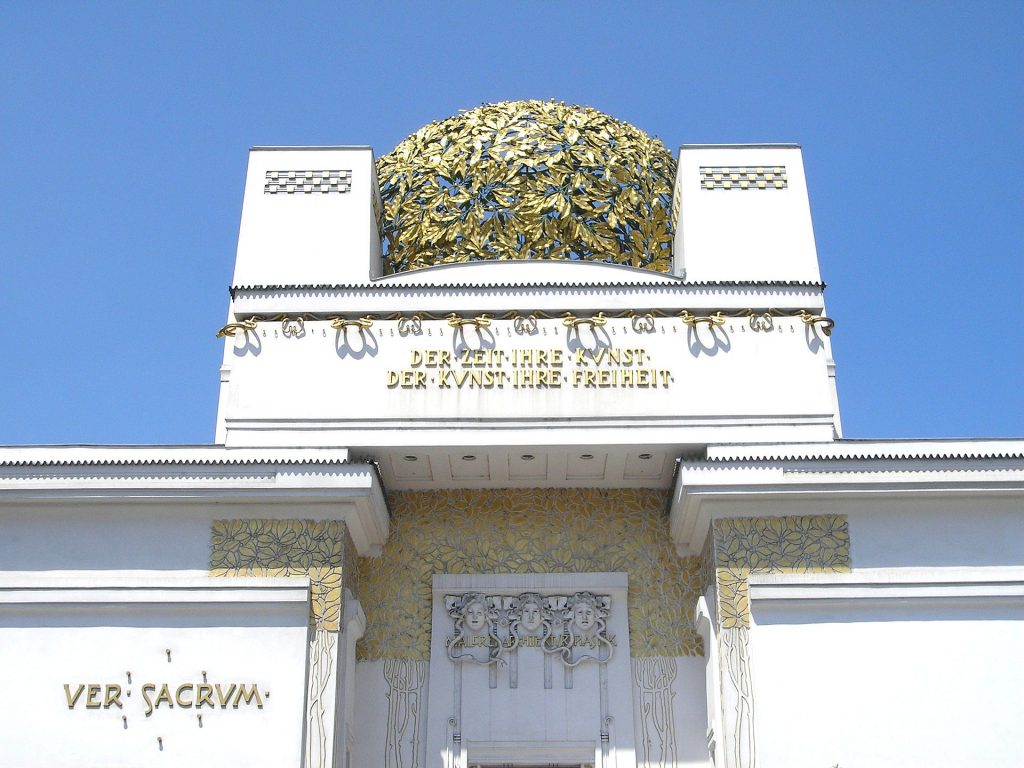Vienna’s Art Revolution
The Vienna Secession: art & design and architecture
The end of the nineteenth century was a time of scientific achievement, industrialization, and overall societal change; it is no wonder that art was soon to change as well. The Vienna secession is one of the first modern art movements in history, originating from artists’ revolt of the current understanding of art and their desire to change what art meant to society. The Vienna Secession was formed in 1897 by a group of artists, designers, and architects who were committed to their new visions of what art should be. They broke away from classical art schools that remained stuck in old-fashion academic art styles.

Poster for the Fifth Secession Exhibition by Koloman Moser 
Gustav Klimt – The Beethoven Frieze
1902
Image 2: https://www.widewalls.ch/magazine/vienna-secession
There was no distinct style associated with the movement; its members rather focused on their ultimate goal of modernizing Austrian art. However, some characteristics such as symmetry and repetition were relatively common in the Secession’s overall style.
The Vienna secession was founded by Gustav Klimt, Otto Wagner, Josef Hoffmann, Koloman Moser, Joseph Olbrich, and Carl Moll.
The Vienna Secession’s formation marked the true beginning of modern art in Austria, which at the time had very conservative traditions. It cross-pollinated across many artistic disciplines, merging naturalism, modernism and impressionism together. Much like William Morris and the Arts and Crafts movement, the Vienna Secession valued handmade objects of good quality, and that returning to handmade work could rescue society from “moral decay.”
Left: Japanese postcard from the early 1900’s
Right: Hans Christiansen, 1900
https://www.theviennasecession.com/vienna-secession/
As in many art movements of the time, Japonism had a great influence on the Secession. Artist of the secession were inspired by the limited decorations, natural materials, and balance of Japanese artwork.
The home of the movement is (literally and figuratively) the Secession building (or secession house) in Vienna. It was designed by architect Josef Olbrich. The building’s architecture was reminiscent of Art Nouveau, but heavily simplified as it was not nearly as ornamental as the latter.
The Secession building was created as a space that could accommodate various types of exhibitions. It can be considered a precursor to architectural functionalism due to its versatile design. Moveable columns were incorporated into the building’s well-though design in order to accommodate a great array of gallery layouts.
https://www.swanngalleries.com/news/vintage-posters/2017/05/graohic-design-vienna-secession/
The building was famously nicknamed “The Golden Cabbage” due to the lattice inside its dome, which is made of intertwined golden leaves.
Bibliography
https://www.theartstory.org/movement/vienna-secession/#nav


